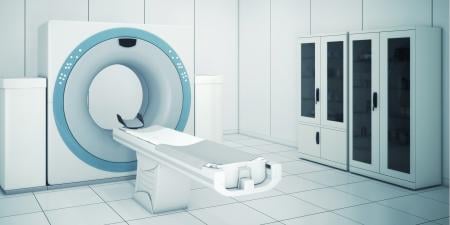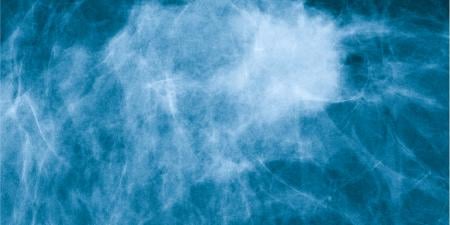X-rays have a particular sort of currency at the sanatorium in Thomas Mann's novel The Magic Mountain. "Ah, you carry it in a case. Like a certificate, as it were—a sort of membership card," says a fellow in-patient to our protagonist, Hans Castorp. And then, approvingly, "Very good. Let me see it" [1]. The tubercular residents of this mountaintop clinic commonly keep small copies of their X-rays in a pocket, ready for display and perusal. These "intimate photographs" are more precious than conventional portraits; Hans begs his beloved Clavdia for her own tiny X-ray print to hold as a memento during her absence from the sanatorium. While he pines for her, he looks into the little glass square and takes comfort and pleasure in the sight of her thoracic cavity. Patients at the clinic know each other as much by lesions and fevers as by names and faces.
The fictional Hans encounters radiology in the early 20th century, receiving a far longer exposure and less certain diagnosis than patients encounter in hospitals today. A medical team on rounds in a modern teaching hospital might gather around a computer screen outside the door of a patient's room, consulting the digitized record for evidence of illness or injury. Rather than producing prints on wallet-size glass plates, laptop computers and handheld devices make radiological images of the patient's body that are portable and can be retrieved almost instantly. Available imaging technologies offer much-needed information and clarification regarding a patient's condition and prognosis. Further, the allure of seeing that which is usually hidden from view intensifies when comfort, health, and even survival may depend on what is revealed.
Hans originally comes to the sanatorium only to visit briefly with a sick cousin, but the director, Dr. Behrens, is able to convince him to undergo a full evaluation. Hans accompanies cousin Joachim to an X-ray and is astounded at the image produced while Joachim sits in the midst of the impressive electrical "storm." Behrens points out Joachim's tubercular lesions,
but Hans Castorp's attention was taken up by something like a bag, a strange, animal shape, darkly visible behind the middle column, or more on the right side of it—the spectator's right. It expanded and contracted regularly, a little after the fashion of a swimming jelly-fish..Good God, it was the heart, it was Joachim's honour-loving heart, that Hans Castorp saw [2]!
In his awe-struck state, Hans is easily persuaded into position for his own X-ray image; Hans' pain is existential rather than physical, but he is eager to participate in the imaging process, and Behrens finds signs of tuberculosis in Hans, too. Hans embraces the X-ray as verifiable evidence of illness and soon joins the ranks of clinic residents, all preoccupied with measuring and monitoring the internal manifestations of their disease. Mann leaves his readers with the suspicion that Behrens—at least in some cases—sees tuberculosis because he is looking for tuberculosis.
Accepting his illness, Hans stays on the mountaintop for years and imbues the "moist spot" on his lungs with import beyond anything his doctor has diagnosed. On his knees before Clavdia he declares that "no doubt what Behrens found in my body are the lingering traces of my age-old love for you.." [3]. Hans equates the illumination of their internal physical structures with the revelation of their souls. He pleads for permission to touch Clavdia's body while describing it in clinical terms meant to convince Clavdia that loving her physically would also give him access to her very essence. Coy Clavdia fends off his seduction and takes her leave with the cruel and witty prediction "that you'll see a nasty rise in your fever chart this evening" [4]. Hans longs to see deep into Clavdia, into himself, and into the world in his search for meaning.
Mann's novel is, after all, a comment on broader social issues and not just a literal study of the angst of one man. The mountain clinic is a complex culture, full of characters who challenge and inform Hans. Through his interactions and conversations, we wrestle with questions of belief and experience, of nature and technology, of body and soul. When Hans receives that miniature X-ray print, he acquires a passport to what Susan Sontag metaphorically describes as the "kingdom of the ill" [5], made real in Mann's pages. Hans knows he is ill because the X-ray declares it so, and his doctor merely shows him how to see the proof in the picture. Although the diagnostic supremacy of this image is questioned at several points in the book, Hans and Behrens cling to its truth because it provides both of them with identity and purpose. This kingdom—this clinic—offers a framework for exploring the great questions of life, relying on tuberculosis as an ever-present reminder of death. Without the limits set by his illness, without his new status as patient (in turn dependent on Behrens' status as doctor), Hans would again be adrift in the wider world. On the mountain, each person is clearly defined, gauged by medical means more than by any other measure.
Nearly a century after Hans' sojourn on the magic mountain, images of the body's interior still have the power to seize the imagination and preempt any other form of visualizing a patient's condition. Patients are as susceptible as doctors to the persuasive power of these images, for it is hard to doubt what one sees (or does not see) with one's own eyes. But the act of looking never occurs outside a frame of reference, and attempts at objectivity depend on acknowledging the limits that come with that frame. When considering a fictional world, readers have the luxury of distance in making judgments on the narrated events. In the real world, that same perspective is hard to come by. Without a reliable, omniscient narrator and the ingenious prose of a talented author to guide us, we can only do our best to find the boundaries of the conditions within which we operate. Hans Castorp and Dr. Behrens regard an X-ray and see not only a body but also an entire universe. We, doctors and patients alike, must attempt to see the universe as well as the body in the images held up for our interpretation.
References
-
Mann T. The Magic Mountain. Lowe-Porter HT, trans-ed. New York, NY: Vintage Books; 1969:241.
-
Mann, 217.
-
Mann T. The Magic Mountain. Woods JE, trans-ed. New York, NY: Vintage Books; 1996:336.
-
Mann, 338.
-
Sontag S. Illness as Metaphor. New York, NY: Farrar Strauss & Giroux; 1988: 3.



